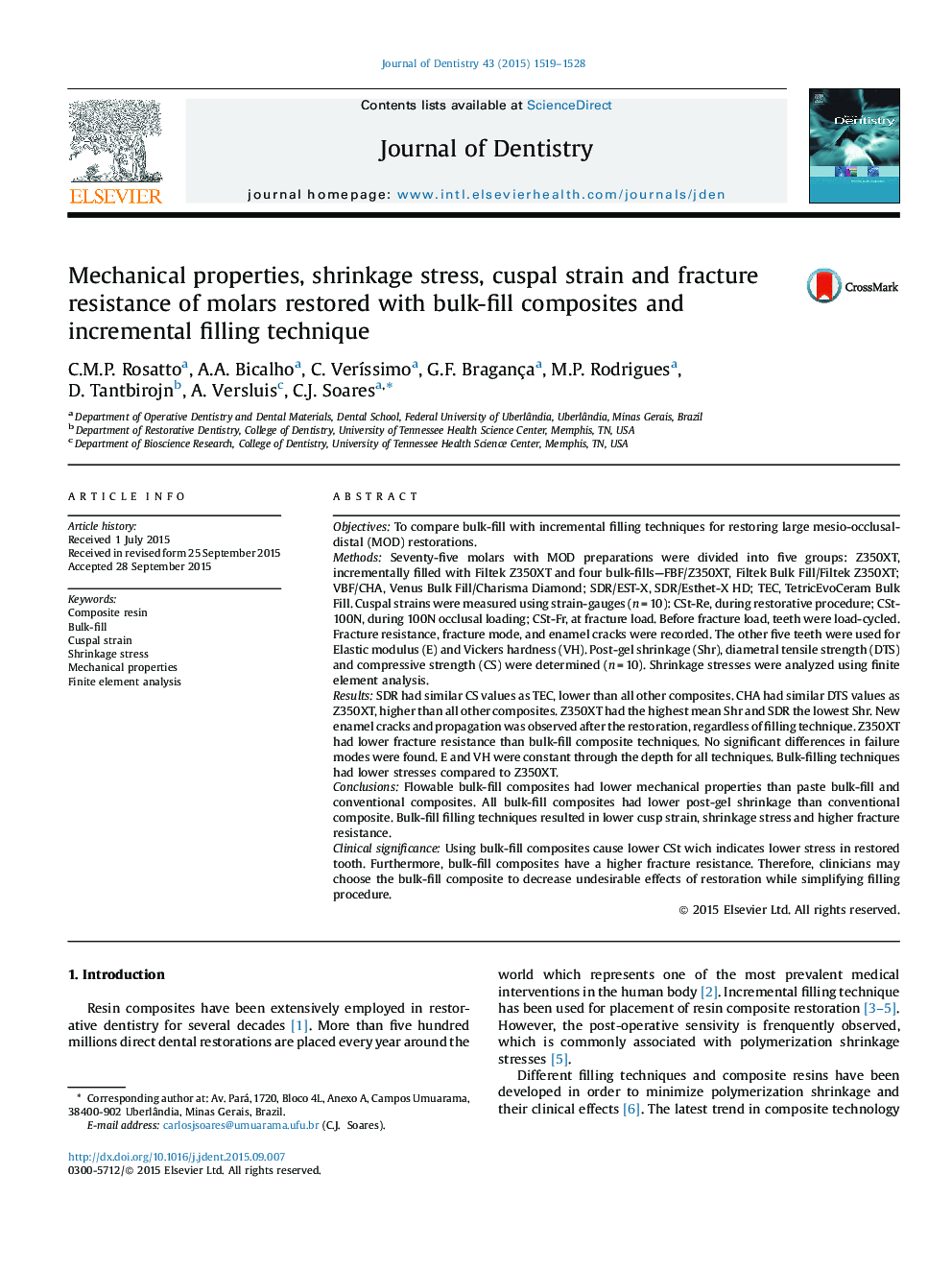| Article ID | Journal | Published Year | Pages | File Type |
|---|---|---|---|---|
| 6053308 | Journal of Dentistry | 2015 | 10 Pages |
ObjectivesTo compare bulk-fill with incremental filling techniques for restoring large mesio-occlusal-distal (MOD) restorations.MethodsSeventy-five molars with MOD preparations were divided into five groups: Z350XT, incrementally filled with Filtek Z350XT and four bulk-fills-FBF/Z350XT, Filtek Bulk Fill/Filtek Z350XT; VBF/CHA, Venus Bulk Fill/Charisma Diamond; SDR/EST-X, SDR/Esthet-X HD; TEC, TetricEvoCeram Bulk Fill. Cuspal strains were measured using strain-gauges (n = 10): CSt-Re, during restorative procedure; CSt-100N, during 100N occlusal loading; CSt-Fr, at fracture load. Before fracture load, teeth were load-cycled. Fracture resistance, fracture mode, and enamel cracks were recorded. The other five teeth were used for Elastic modulus (E) and Vickers hardness (VH). Post-gel shrinkage (Shr), diametral tensile strength (DTS) and compressive strength (CS) were determined (n = 10). Shrinkage stresses were analyzed using finite element analysis.ResultsSDR had similar CS values as TEC, lower than all other composites. CHA had similar DTS values as Z350XT, higher than all other composites. Z350XT had the highest mean Shr and SDR the lowest Shr. New enamel cracks and propagation was observed after the restoration, regardless of filling technique. Z350XT had lower fracture resistance than bulk-fill composite techniques. No significant differences in failure modes were found. E and VH were constant through the depth for all techniques. Bulk-filling techniques had lower stresses compared to Z350XT.ConclusionsFlowable bulk-fill composites had lower mechanical properties than paste bulk-fill and conventional composites. All bulk-fill composites had lower post-gel shrinkage than conventional composite. Bulk-fill filling techniques resulted in lower cusp strain, shrinkage stress and higher fracture resistance.Clinical significanceUsing bulk-fill composites cause lower CSt wich indicates lower stress in restored tooth. Furthermore, bulk-fill composites have a higher fracture resistance. Therefore, clinicians may choose the bulk-fill composite to decrease undesirable effects of restoration while simplifying filling procedure.
